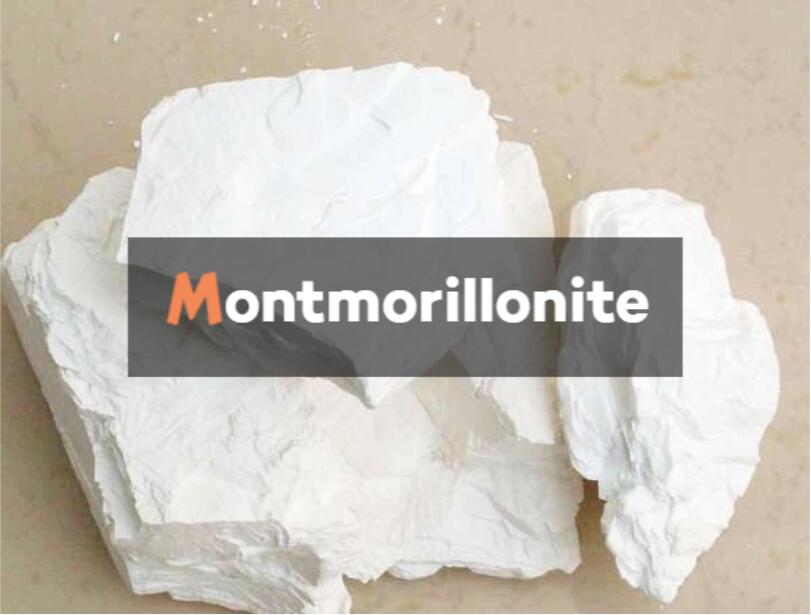For product information and pricing, Chat with sales agent:
or email us : sales@clirik.com
Click links below to see related products.

Montmorillonite, a type of clay mineral, finds wide-ranging applications across various industries due to its unique properties.

Choosing the suitable montmorillonite grinding mill involves considering several factors related to your specific requirements, such as the desired particle size, production capacity, energy efficiency, and cost-effectiveness. Here's a step-by-step guide to help you make an informed decision:
l Define Your Requirements: Determine the key parameters for your grinding process, including the desired particle size distribution, production capacity (tons per hour), and the specific characteristics of the montmorillonite clay you're processing.
l Understand the Grinding Process: Familiarize yourself with the different types of grinding processes and equipment available for montmorillonite clay processing, such as ball mills, Raymond mills, hammer mills, jet mills, and grinding pulverizers. Each type has its advantages and limitations in terms of particle size control, energy efficiency, and maintenance requirements.
l Consider Particle Size Control: Depending on your application, you may require a grinding mill capable of producing a specific particle size distribution, ranging from coarse to ultra-fine. Some mills offer built-in mechanisms for precise particle size control, while others may require additional classification or screening equipment.
l Evaluate Energy Efficiency: Energy consumption is a significant operating cost for grinding mills. Look for features such as efficient motor drives, low-friction bearings, and advanced control systems that minimize energy waste and optimize grinding efficiency. Consider the total cost of ownership, including energy consumption and maintenance costs, when comparing different mill options.
l Assess Production Capacity: Choose a grinding mill that can handle your desired production capacity while maintaining consistent performance and product quality. Consider factors such as the size of the grinding chamber, the speed of the mill, and the efficiency of the grinding process in relation to your production requirements.
l Evaluate Material Handling and Safety Features: Consider features such as material handling systems, dust collection and ventilation systems, and safety features to ensure a safe and efficient working environment. Dust collection systems are particularly important for handling fine powders such as Montmorillonite clay to prevent health hazards and equipment damage.
l Compare Costs: Compare the initial purchase cost, operating costs, and maintenance requirements of different grinding mills to determine the most cost-effective option for your application. Consider factors such as equipment reliability, availability of spare parts, and technical support from the manufacturer or supplier.
l Consult with Experts: Seek advice from experienced engineers, equipment manufacturers, or suppliers specializing in clay processing equipment. They can provide valuable insights and recommendations based on their expertise and industry knowledge.
By carefully considering these factors and consulting with experts, you can choose the most suitable Montmorillonite grinding mill that meets your specific requirements and delivers optimal performance and cost-effectiveness for your application.
Montmorillonite clay powder grinding mills are typically industrial-grade equipment used in processing plants or factories. These machines are designed to efficiently grind montmorillonite clay into fine powder, which can be further used in various applications such as ceramics, cosmetics, pharmaceuticals, and drilling muds in the oil and gas industry.
The grinding process involves reducing the particle size of the clay through mechanical forces such as compression, impact, and shear. This is typically achieved using specialized grinding mills or pulverizers, which can vary in design depending on the desired fineness of the final product and the specific characteristics of the clay.
Common types of grinding machines used for processing montmorillonite clay powder include:
l Ball mills: These are rotating cylindrical vessels partially filled with grinding media such as ceramic balls or pebbles. As the vessel rotates, the grinding media cascade and pulverize the clay particles, resulting in fine powder.
l Raymond mills: Also known as roller mills, these machines utilize a rotating grinding ring and multiple rollers to crush and grind the clay feed material. The rollers exert pressure on the material, forcing it to pass between them and be pulverized into fine powder.
l Hammer mills: These machines use rotating hammers or blades to impact and pulverize the clay feed material. The size of the final powder is controlled by the size and shape of the hammers or blades, as well as the speed of the rotor.
l Ultrafine mills: The ultrafine mill, also known as HGM ultrafine grinding mill, is a high-efficiency and energy-saving grinding equipment developed by Shanghai Clirik Machinery Co., Ltd. It is specifically designed for processing various non-metallic minerals with Mohs hardness below 7 and humidity within 6%, such as Montmorillonite clay, limestone, calcite, marble, talc, barite, dolomite, kaolin, gypsum, and others. It can process 200-3000 mesh powder.
l Jet mills: Jet milling involves high-speed compressed air or gas streams that impact the clay particles, causing them to fracture and reduce in size. Jet mills are often used for producing ultra-fine powders with narrow particle size distributions.
When selecting a grinding machine for processing montmorillonite clay powder, factors such as production capacity, particle size distribution, energy consumption, and maintenance requirements should be considered to ensure optimal performance and cost-effectiveness. Additionally, proper safety measures should be implemented to protect operators and prevent accidents during the grinding process.
